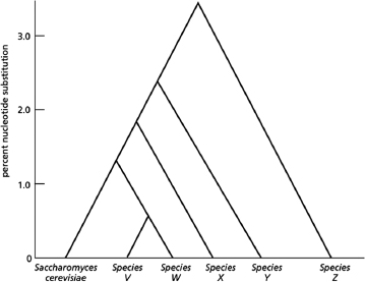Course
Cell Biology
Study Pack
Set 9 How Genes And Genomes Evolve
Question 1
(Multiple Choice)
Free
Which of the following statements is FALSE?
A)The human genome is more similar to the orangutan genome than it is to the mouse genome.
B)A comparison of genomes shows that 90% of the human genome shares regions of conserved synteny with the mouse genome.
C)Primates, dogs, mice, and chickens all have about the same number of genes.
D)Genes that code for ribosomal RNA share significant similarity in all eukaryotes but are much more difficult to recognize in archaea.
Answer
Question 2
(Multiple Choice)
Free
Which of the following statements is TRUE?
A)The position of introns in most genes is conserved among vertebrates.
B)The more nucleotides there are in an organism's genome, the more genes there will be in its genome.
C)Because the fly Drosophila melanogaster and humans diverged from a common ancestor so long ago, any two fly genes will show more similarity to each other than it will to a human gene.
D)Two closely related organisms are more likely to have a genome of the same size than a more evolutionarily diverged animal.
Answer
Question 3
(Multiple Choice)
Free
You are interested in finding out how the budding yeast Saccharomyces cerevisiae is so good for making bread and have collected five new related species from the wild.You sequence the genomes of all of these new species and also consult with a fungal biologist to help you construct the phylogenetic tree shown in Figure 9-19.You find that species V, W, and X make pretty good bread whereas species Y and Z do not, suggesting that the last common ancestor of species X and S.cerevisiae may have the genes necessary for making good bread.You compare the gene sequences of species X and S.cerevisiae and find many identical coding sequences, but you also identify nucleotides that differ between the two species.Which species would be the best to examine to determine what the sequence was in the last common ancestor of species X and S.cerevisiae?  Figure 9-19
Figure 9-19
 Figure 9-19
Figure 9-19A)species V
B)species W
C)species Y
D)species Z
Answer